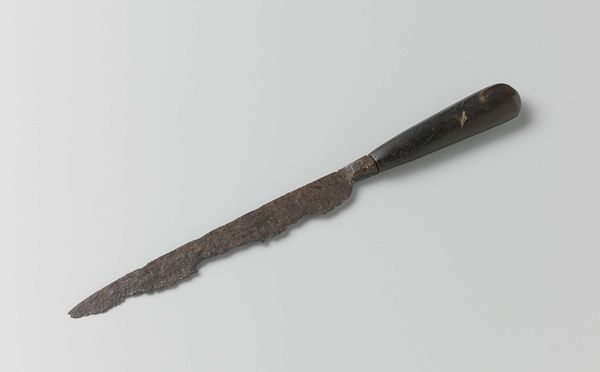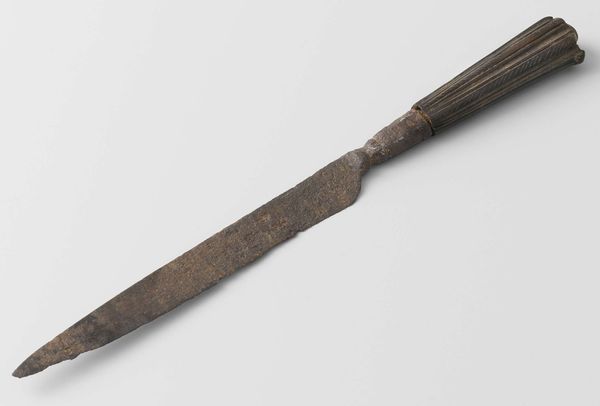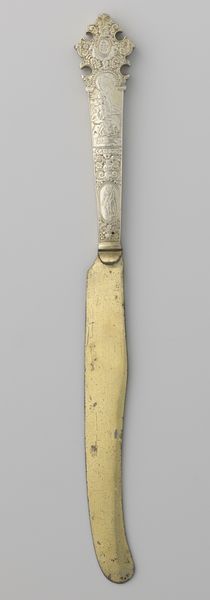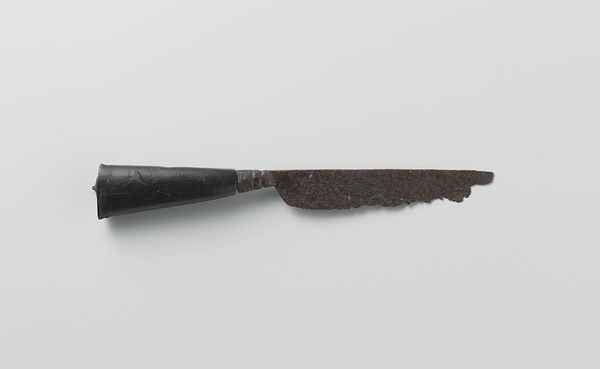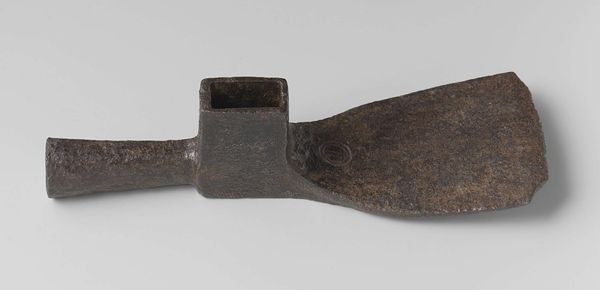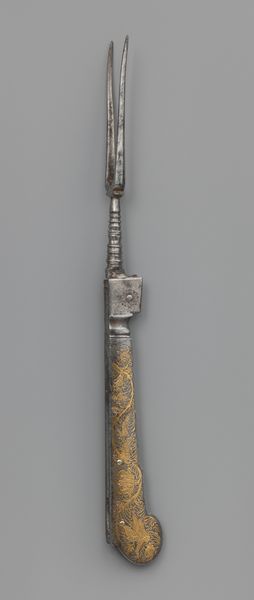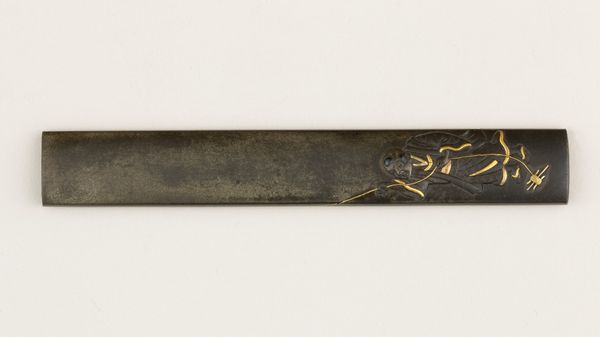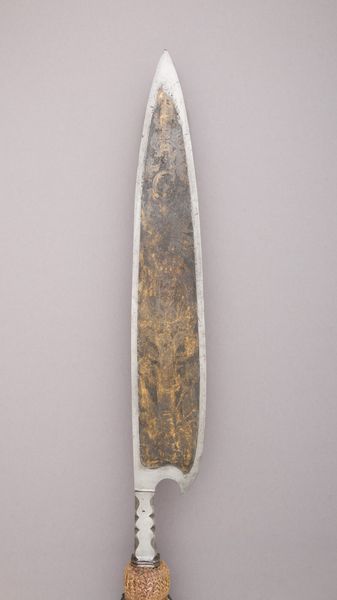
metal, wood
#
metal
#
sculpture
#
wood
Dimensions: 25 3/4 x 4 x 1 3/4 in. (65.41 x 10.16 x 4.45 cm)
Copyright: Public Domain
Curator: This remarkable sculpture, simply titled "Blade," originates from around the 19th century and is currently held here at the Minneapolis Institute of Art. The piece blends carved wood with what appears to be worked metal. Editor: The object itself exudes a somber stillness, don't you think? It's strangely beautiful in a harsh, almost violent way, but the patterning softens that blow considerably. The shape feels… well, like a tear. Like an elegant silver tear. Curator: Indeed. Note the elegant curve and the rather unique widening toward the tip. The incised patterns, repeated along the handle and the blade itself, establish a powerful visual rhythm, emphasizing the work's essential form and line. What can we say about indigenous design without being appropriative or essentializing? Editor: Hard to say, of course, though I bet that that repeating pattern isn't merely decorative but symbolically charged. It adds an extra dimension, layering meaning beneath the purely visual. It suggests perhaps the rippling effect in the water of tears falling one by one, a bit dark! Curator: Possibly! And consider how the artist plays with texture, from the rough wrapping of the handle to the polished, almost reflective surface of the blade itself. These contrasts elevate what might otherwise be a purely functional object to something of considerable artistic merit. Editor: Absolutely. Thinking about how cold that metal feels in your hand, and knowing it was made as a cutting tool and weapon, brings such weight to the visual impression of loss I felt at first glance! But like a tool for processing grief itself. Isn't art amazing for creating this kind of cathartic feeling? Curator: Precisely, and it serves as a compelling example of material culture imbued with meaning. Editor: Definitely a great point to end on, thank you!
Comments
No comments
Be the first to comment and join the conversation on the ultimate creative platform.

